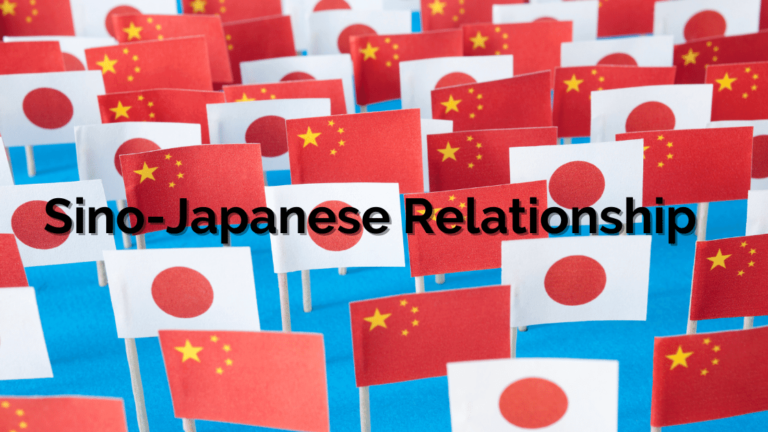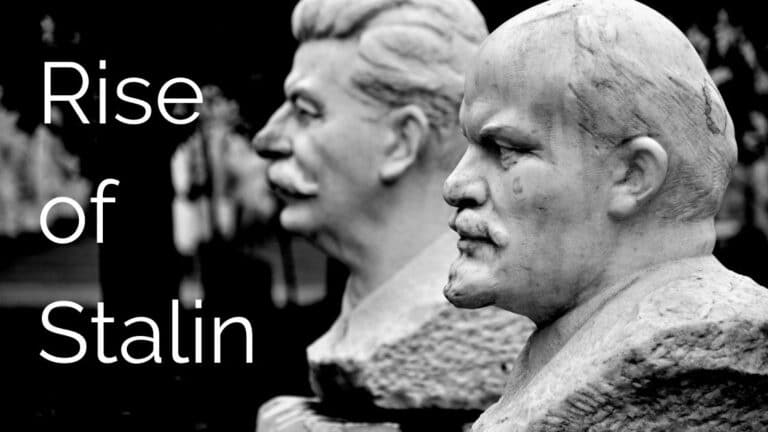Complete Sample Social Studies Issue 2 SRQ
Similar to the blog for Issue 1, this blog post focuses on sample essay questions for Social Studies Issue 2. Please note that these sample essay questions are not meant to be memorised; they are meant to help you understand how similar questions can be answered.
For readers who just want to download the pdf version to read in their own time, I have put a link below this paragraph. You may also read these essays as a blog post.
Chapter 4: Identity
(P) Nationality is important in shaping one’s identity.
(E) People of the same nationality usually share a common history, traditions, practices, language and live together in the same geographical area. For example, food customs are distinct to specific nations, such as the Austrian wiener schnitzel, the Greek lamb kleftiko, English roast beef, Yorkshire pudding and the Indian tandoori chicken.
(E) With a shared national identity, aspects of it would shape one’s actions in interactions with other citizens. One would be able to relate to different aspects of their nationality in different ways. These shared beliefs and experiences influence a large part of one’s national identity.
(L) Thus, nationality is important in shaping one’s identity.
(4.1.2) Race and Ethnicity
(P) Race and ethnicity are important in shaping one’s identity.
(E) Race is the classification of people by their physical characteristics such as skin, eye and hair colour. Ethnicity refers to one’s ancestry, cultural practices, language, customs, food and attire. Race and ethnicity define one’s background and can influence the activities one engages in. Due to cultural influences, one will uniquely view the world from one’s race and ethnicity. As a result, it dramatically affects how one interacts with others and alters one’s life experience. Furthermore, race and ethnicity play a crucial role in one’s social connections as one tends to be more connected to others of the same race and ethnicity.
(E) For example, the Chinese share similar physical characteristics of light skin tone, black eyes and hair. Many people who are Chinese identify with each other because of similar appearances, even though they may be citizens of different countries. This is even more so if these Chinese retain their common cultural practices and traditions.
(L) Thus, race and ethnicity are essential in shaping one’s identity.
(4.1.3) Religion
(P) Religion is essential in shaping one’s identity.
(E) Religion is an organised collection of attitudes, beliefs, practices and world views shared by many people. Religion shapes the way one interacts with others, the choices one makes, and one’s thinking. Religion influences our way of life in many ways and guides us to a path in life that aligns with the values promoted by that religion.
(E) An example would be Buddhism which follows the teaching of Buddha, who promoted peace and harmony among different races and religions, non-violence and appreciation of all living things in an interdependent world. Buddhists believe that they must care for the welfare of all living things. Thus, most Buddhists can identify each other due to a similar outlook in religion.
(L) Thus, religion plays a vital role in shaping one’s identity.
(4.1.4) Socio-economic Status
(P) Socio-economic status is important in shaping one’s identity.
(E) Socio-economic status refers to the economic situation of a group of people and is usually determined by occupation, income, education and wealth ownership. People of different socio-economic classes have various forms of lifestyles. In Singapore, an individual or household income level is used as the indicator for socio-economic status. Thus, it can influence the circle of friends that one interacts with.
(E) Socio-economic status defines one’s capacity to afford and may shape their life experiences as it affects the choice of housing, food, entertainment and activities. Hence, it influences their social circle and can shape their identity from the interactions they encounter. One’s perspective of the world may be significantly affected by their socio-economic status, which is an integral part of their self-identity.
(L) Thus, socio-economic status plays an essential role in shaping one’s identity.
Chapter 5: Factors Causing Greater Diversity
(5.1) Immigration Policy
(P) Immigration policy is essential in causing greater diversity in Singapore.
(E) Singapore’s immigration policy is closely linked with the workforce needs of the country. In the 1980s, Singapore faced a declining population, and a brain drain as highly skilled and talented people left Singapore to work and stay overseas. The government encouraged immigration to the declining population. The current policy focuses on encouraging higher-skilled foreigners to settle down in Singapore to support our knowledge-based economy.
(E) Without immigration, our number of working-age citizens would decline from 2020 onwards. The age-dependency ratio will also worsen with each working adult needing to support an increasing number of elderlies in the future. The constant arrival of foreigners contributes to Singapore’s diversity by bringing their own culture, ethnic beliefs and practices. Over time, Singapore becomes more diverse as we welcome more immigrants into Singapore to meet the challenges of a declining birth rate and an ageing population.
(L) Therefore, having a favourable immigration policy is essential in causing greater diversity in Singapore.
(5.2) Economic Opportunities
(P) Economic opportunities are essential in causing greater diversity in Singapore.
(E) In Singapore, employment opportunities are readily available due to the large number of businesses that operate here. The ease of doing business, growth potential, stable political environment and well-established judiciary system attracts global investors such as multinational corporations (MNCs). With the increase in the number of MNCs, there are more employment opportunities and consistent investments for Singapore, enabling her to remain competitive and continue to stay as a vibrant business hub creating even more economic opportunities.
(E) Economic opportunities often attract migrants and immigrants looking for employment that may not exist in their home countries. With more economic opportunities, more immigrants seeking employment are attracted to Singapore. The migrants and immigrants come from different nationalities, bringing in their unique social and cultural backgrounds, practices, and skillsets, which add to the diversity in Singapore.
(L) Thus, economic opportunities are essential in causing greater diversity in Singapore.
(5.3) Socio-Cultural Environment
(5.3.1) Community Support
(P) Community support for foreigners is essential in causing greater diversity in Singapore.
(E) Singapore is home to ethnic communities and cultures worldwide. Many of them have formed communities that help support their fellow countrymen and help them integrate into Singapore. These communities also participate in their own country’s culture, food, and other practices, which support foreigners moving to Singapore as these practices allow the newcomer to feel at home.
(E) For example, the Japanese gather in Clarke Quay Central and Millennium Tower. They can buy authentic Japanese produce from the supermarkets and eat authentic Japanese cuisine from restaurants. Other foreigners have set up similar gathering spots.
(L) Hence, the presence of community support helps bring about greater diversity.
(5.3.2) Safe Environment
(P) A safe environment also causes greater diversity in Singapore.
(E) Singapore is known to be a safe and secure country to work and live in. Singapore’s laws and efficient police force have helped ensure a relatively low crime rate. Singapore is also known to have low corruption rates and is thus known as a very business-friendly environment.
(E) For example, many international companies like to invest and set up their regional headquarters in Singapore because they know that the stable environment will protect their investment. Hence, their businesses have an excellent opportunity to be profitable. When these companies enter Singapore, they bring in their foreign staff, which adds to Singapore’s diversity.
(L) Hence, Singapore’s safe environment causes greater diversity in Singapore
(5.3.3) Education System
(P) Singapore’s quality education system helps bring about greater diversity.
(E) Singapore’s education system is well-recognised and well-regarded internationally. Singapore’s public schools have scored highly in international tests and have universities ranked among the best. In addition, Singapore also has many reputable international schools. As a result, many foreigners are willing to work in Singapore as they know their children’s education will be taken care of.
(E) For example, the Ministry of Education welcomes foreigners to join Singapore’s education system by conducting an annual assessment to allow international students to enter public schools. In addition, many international students come to Singapore to study in public universities like National Technological University and private universities like James Cook. Thus, it is common to find international students in Singapore.
(L) Hence, having quality education helps bring about diversity in Singapore.

Chapter 6: Experiences and Effects of Living in a Diverse Society
(6.2) Exchange and Appreciation
(6.2.1) Culture
(P) Living in a diverse society brings about cultural exchanges and appreciation of other cultures.
(E) As Singapore society is diverse, we can interact and learn from people from other countries and cultures. As a result, we are exposed to new and novel ideas as they may have a different perspective. Hence, we can learn and appreciate their culture. In addition, it also creates a fusion of civilisations as we learn from each other.
(E) For example, this brings about fusion food, music and fashion. Nowadays, eating food with elements from Asian and European cuisine is common. Examples of such dishes include squid ink mantou, laksa pesto linguini and otah burger.
(L) Hence, living in a diverse society allows us to create hybrid cultural food and practices.
(6.2.2) Skills and Knowledge
(P) Living in a diverse society also brings about the exchange of skills and knowledge.
(E) Many foreign scientists and researchers who have moved to Singapore can share their knowledge and expertise with Singaporeans. This is because Singapore invited renowned scientists to Singapore to provide leadership to local research institutes and mentor young local scientists. Likewise, they may pick up some knowledge from Singaporean researchers.
(E) For instance, under the Biomedical Research Council (BMRC), renowned scientists jumpstarted Singapore’s biomedical sciences sector. This diversity in knowledge and skills has led to breakthroughs, such as the H1N1 flu vaccine.
(L) Hence, living in a diverse society has enabled an exchange of skills and knowledge.
(6.3) Challenges
(6.3.1) Prejudice and Misconceptions
(P) Living in a diverse society brings about prejudice and misconceptions between people.
(E) As people come from different backgrounds, they may misunderstand each other due to conflicting values, beliefs and customs. They have a misconception of the person due to their ethnicity, religious beliefs or just the way they dress. These can take the form of hurtful remarks or negative sentiments when people jump to conclusions
(E) For instance, a pastor of a large Christian church made insensitive and unsubstantiated comments about Buddhism in a sermon. The video of the address spread virally, and it created a huge uproar. Even though the pastor apologised publicly, inter-faith harmony was shaken by the incident.
(L) Hence, living in a diverse society brings about prejudice among people.
(6.3.2.1) Concerns over Standard of Living
(P) Living in a diverse society brings about fears over the standard of living.
(E) With the inflow of foreigners into the country, some Singaporeans fear that the foreigners will cause the standard of living of Singaporeans to suffer. One reason for this is that they believe foreigners will take jobs away from Singaporeans. They also think that foreigners will cause congestion in the public transportation system, compete with healthcare resources and deprive Singaporeans of public housing. As a result, there is increased discrimination against foreigners.
(E) For instance, many foreigners who come to work in Singapore are likely to be holding a Professional, Manager, Executive and Technical (PMET) job. Some Singaporeans believe that these foreigners had caused some older white-collar Singaporeans to lose their jobs due to competition. The loss of jobs will lead to Singaporeans having a lower standard of living.
(L) Hence, living in a diverse society causes fears over the standard of living.
(6.3.2.1) Concerns over Social Mobility
(P) Living in a diverse society brings about fears over social mobility.
(E) Social mobility refers to the ability of individuals to move between different socio-economic statuses. The ability for individuals to improve their income is seen as social mobility. However, many Singaporeans worry that the increase in foreigners has decreased the opportunities for social mobility.
(E) For instance, there are many S-Pass and Employment Pass holders in local industries. Singaporeans cannot compete with them as they are much cheaper to employ. As Singaporeans cannot find jobs, they cannot improve themselves to move up the economic ladder.
(L) Hence, a consequence of living in a diverse society is worry about social mobility.

Chapter 7: How do we respond in a Diverse Society
(7.1) Management and Impact of Socio-Cultural Diversity
(7.1.1) Assimilation
(P) Assimilation means the immigrant is expected to adopt the practices and beliefs of the majority group of the host country.
(E) For example, in France, immigrants are expected to identify with the French principle of laïcité or secularism. They are expected to put aside their affiliations to race, ethnicity, religious and socio-economic status and publicly display their French national identity. France uses education (secular and focus on the French national identity), employment (acquire social capital and learn the French language) and naturalisation (programmes for immigrants to learn French history, culture and language) to encourage immigrants to assimilate.
(E) All these policies ensure immigrants interact as much as possible with other French people. Hence, immigrants will attain fluency in French, adopt French attitudes and beliefs. Thus, immigrants will be assimilated into French society and be indistinguishable from other French citizens.
OR
(E) However, this policy has created tensions between the native French people and immigrants. Many new immigrants hold on to their religious identity and insist on wearing religious symbols in public, which is against the French ideal of secularism. Some French nationalists believe this is a threat to French national identity and has caused tension between immigrants and French nationalists.
(L) Hence, requiring Assimilation may bring immigrants closer or cause tensions.
(7.1.2) Integration
(P) Integration means the immigrant retains their own unique identities while finding common ground with the groups living in the host country.
(E) For example, Singapore has consistently recognised and respected the differences of people from different races and religions, even immigrants. At the same time, immigrants are encouraged to find common ground with Singaporeans. To help immigrants integrate, Singapore practices Naturalisation Initiatives (The Singapore Citizenship Journey), Common Experiences (Singapore Permanent Resident (SPR) on HDB and National Service) and Community Support (participation in grassroots events).
(E) As a result, immigrants feel that their religious and cultural identities are respected as they work towards identifying with Singapore national identity. This policy helps them integrate into Singapore as their identity is not threatened.
OR
(E) However, the presence of immigrants makes Singaporeans feel that their jobs have been threatened. Some Singaporeans also blame immigrants for causing inflation and overcrowding of public infrastructure like transport. Some also think that the Singapore identity has also weakened.
(L) Hence, an integration policy for immigrants brings about advantages and disadvantages.
(7.2) Management and Impact of Socio-Economic Diversity
(7.2.1) Market-based Approach
(P) In a market-based approach, the government allows private companies to provide healthcare services.
(E) For example, in the United States, the US central government only provides guidelines for private healthcare companies. Private companies are allowed to provide healthcare based on these guidelines. Hence, individuals can choose what type of healthcare they want, depending on their budget. They also do not believe in a government-led approach. Many Americans believe that using a market-based healthcare system is the most efficient as competition between providers cuts out inefficiency.
(E) The market-based approach benefits people with higher income as they can get better quality healthcare. This is due to competition between private healthcare providers. As a result, people with more wealth can choose the best treatments and facilities for themselves, resulting in a better and more comfortable healthcare experience. However, the market-based approach has created high healthcare costs and is thus out of reach to many poorer Americans. As a result, the US government must intervene by providing Medicare, Medicaid and the Affordable Healthcare Act to help lower-income citizens receive primary healthcare. In the end, the market-based approach has resulted in governmental intervention despite its original intent.
(L) Hence, the market-based approach has certain limitations, and the government may need to intervene.
(7.2.2) Shared-responsibility Approach
(P) In a shared-responsibility approach, the government subsidises public healthcare needs while allowing the private healthcare sector to complement the public healthcare sector.
(E) For example, in Singapore, citizens can use their own money to pay for much of their healthcare through the government managed MediSave Scheme under the Central Provident Fund (CPF). Moreover, government subsidies are part of public healthcare. Furthermore, people who want a more luxurious experience can seek the more expensive private healthcare service providers.
(E) The shared-responsibility approach allows people to choose the type of healthcare they prefer. At the same time, the government ensures that even the low SES Singapore citizens can afford quality healthcare. As a result, the Singapore government can provide better healthcare services while using fewer government resources.
(L) Hence, the shared-responsibility approach ensures quality public and private healthcare.
(7.2.3) Government-financed Approach
(P) In a government-financed approach, the government is the primary provider of healthcare.
(E) For example, in Sweden, all adults need to pay a maximum of €122 for healthcare visits. Drug prescription is also capped at €122, after which the subsidy becomes 100%. This allows all Swedes to have an affordable healthcare system.
(E) The benefit of the government-financed is that every Swede can afford quality healthcare services. As a result, the overall health of Sweden is taken care of. However, the personal income tax for Swedes is very high as the government needs a lot of money to pay for the healthcare of the entire population. Hence, the richest Swedes must fork out more money. This might encourage wealthy Swedes to migrate to other countries. Furthermore, the system will be further burdened as Sweden is an ageing population.
(L) Hence, the government-approached approach ensures all can afford healthcare though it is not certain if this approach is sustainable.
Conclusion
You can find more information regarding Social Studies or Social Studies SRQ.
Other parts of the SRQ samples are here:
Finally, the downloadable file can be found below.

Critical Thought English & Humanities is your best resource for English, English Literature, Social Studies, Geography and History.
My experience, proven methodology and unique blend of technology will help your child ace their exams.
If you have any questions, please contact us!







